PSBA SCHOOL LEADER

summer 2025 Informing and engaging Pennsylvania’s public school leaders


summer 2025 Informing and engaging Pennsylvania’s public school leaders

summer 2025 Informing and engaging Pennsylvania’s public school leaders




BY ALLIE ARTHUR
In 2023, Pennsylvania joined only a handful of other states – including Colorado, Maryland, Michigan and New Jersey – in providing funding within the state budget for student teachers to receive stipends during their clinical semester.
BY PETE CROATTO
The strategy to welcome and empower new school directors in the Wattsburg Area School District is rooted in thoughtful leadership and a commitment to unity. Superintendent Dr. Ken Berlin and Dr. Andy Pushchak, a veteran school director and current board treasurer, have spent over a decade refining a process that fosters collaboration and continuity.
AI Symposium presenter Dr. Oliver Dreon, professor at Millersville University, describes the changes he’s observed in ed tech tools and applications over the past few decades and discusses the considerations for today’s school leaders who are tasked with teaching, utilizing and modeling smart and ethical use of artificial intelligence (AI).
GPS LEARNING LAB: TRAINING ON LOCATION FOR THE WHOLE SCHOOL COMMUNITY 18 24 28 32
Introducing the GPS Learning Lab, a mobile, high-tech, interactive training and content exploration experience designed to bring impactful, hands-on learning directly to your district!


BY TASLIYM MORALES
Q: What motivated you to become involved in board service?
Having dedicated over a decade to advocacy work focused on parent engagement, district transparency and accountability, I became increasingly curious about where the breakdowns were occurring.
BY DR. MICHELLE MILLER
Michelle Miller, superintendent at the South Fayette Township School District, shares how her district is implementing AI now and plans for the future.
PSBA President Allison Mathis discusses finding the joy in school board service and PSBA CEO Nathan Mains reflects on what it means to lead well during times of change.
Michelle Miller, superintendent at the South Fayette Township School District, shares how her district is implementing AI now and plans for the future.
What are some ways the board can gain insight on its strengths and areas for growth, for the purpose of enhancing effectiveness?
Eastern Lebanon County School District’s involvement in the SCHOTT Pharma Innovation Challenge encouraged students to apply academic knowledge in meaningful ways and with real-world impact.
Meet Tasliym Morales, school board director at the Chester Upland School
Get answers to frequently asked questions about board governance, from PSBA’s available resources.
One great moment in the life of our public schools.
Sen. Lynda Schlegel Culver discusses educational issues in the legislature and advocacy tips. Also, get an overview of PSBA’s new mandate report.
45
Gain expert tips for cash flow management.
47
Compare a breakdown of professional personnel salaries in public schools across Pennsylvania.
52
How can schools safeguard district funds in the era of cyber malfeasance?
GOVERNING BOARD
PRESIDENT Allison Mathis, North Hills SD
PRESIDENT-ELECT
Sabrina Backer, Franklin Area SD
VICE PRESIDENT
Matt Vannoy, Sharon City SD
TREASURER
Dr. Karen Beck Pooley, Bethlehem Area SD
IMMEDIATE PAST-PRESIDENT
Mike Gossert, Cumberland Valley SD
STAFF
Nathan G. Mains Chief Executive Officer nathan.mains@psba.org
Jackie Inouye Editor
jackie.inouye@psba.org Mackenzie Christ Editor mackenzie.christ@psba.org
Erika Houser Senior Design Manager erika.houser@psba.org www.psba.org (717) 506-2450 (800) 932-0588 Fax: (717) 506-2451

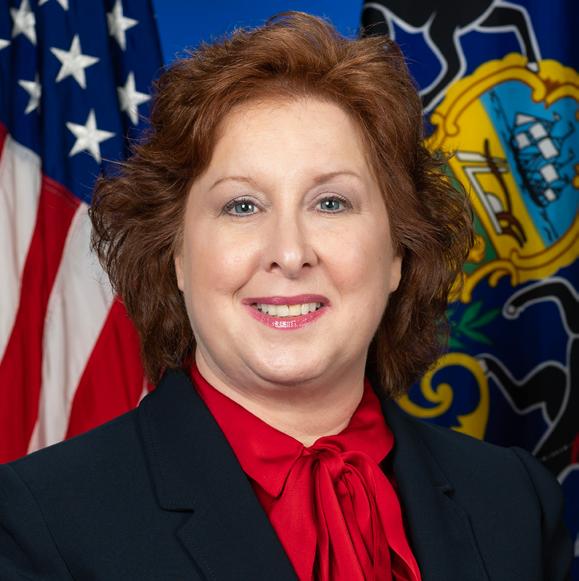
Sen. Lynda Schlegel Culver discusses educational issues in the legislature and advocacy tips. Also, get an overview of PSBA’s new mandate report. SNAPSHOT FROM CHELTENHAM SCHOOL DISTRICT

One great moment in the life of our public schools.


PSBA SCHOOL LEADER BULLETIN: (ISSN 01623559) is published four times a year by the Pennsylvania School Boards Association, 400 Bent Creek Blvd, Mechanicsburg, PA 17050-1873. Tel: (717) 506-2450. Periodicals postage paid at Mechanicsburg, PA and additional mailing locations. Subscriptions: $60 per year (members), $150 per year (nonmembers). Postmaster: Send address changes to PSBA Bulletin, 400 Bent Creek Blvd., Mechanicsburg, PA 17050-1873. EDITORIAL AND ADVERTISING
POLICY: The granting of PSBA Partners and the acceptance of advertising in this publication do not necessarily constitute an endorsement by the Pennsylvania School Boards Association for products and services offered by the advertisers. Official positions and services endorsed by PSBA will be clearly stated and noted in this publication. Opinions by authors do not necessarily reflect positions of PSBA. © 2025 Pennsylvania School Boards Association.


By Allison Mathis, president
“Being a school board director is hard.” “Being on the board since 2020 is different.” “It’s a thankless job.” (Stay with me – I promise this gets more positive!) How often has that been said to you? How often have you said it yourself? I’m not here to discount that reality – I’ve been known to say it myself. But there’s something else we don’t always talk about: the joy, pride and sense of purpose which also comes with being part of a school board.
Since 2020, school board service has looked different. We’ve had to navigate challenges that no one could have predicted – from remote learning to health and safety protocols, from staffing shortages to shifting public expectations. It hasn’t been easy, and it hasn't always been pretty. But through it all, something else has emerged – a deeper appreciation for why we do this work in the first place. As the new school year revs up, here are a few of my favorite things I find myself looking forward to.
I love seeing the excitement on students’ faces as they come back for the first day of school – backpacks a little too big, sneakers squeaky clean, smiles wide with anticipation. I love visiting classrooms (when invited) and seeing teachers create magic out of ordinary moments, helping students build strong math skills and connect deeply with history through engaging, rigorous instruction.
I enjoy Friday Night Lights and the thrill of hometown spirit at a football game. I look forward to board meetings where we recognize students for their achievements – academic, athletic, artistic and personal. Those moments are pure joy, and they remind me why the long hours and tough policy and budget decisions matter.
Speaking of policy and budget, I also find pride in this work and seeing the results of implementation. Approving budgets, updating policies, asking hard questions –these are not glamorous tasks, but they are essential. They make a real, tangible difference for our students, our staff and our community.
Most of all, I look forward to the hope that every new school year brings. Hope that this year will be even better than the last. Hope that we are helping shape a future that is bright, engaging and full of possibility. So yes, being a school director is hard, but it’s also the most rewarding service I’ve given. Have a wonderful year!

By Nathan Mains, chief executive officer
School board service is one of the most meaningful forms of public leadership. It requires vision, collaboration and a deep commitment to the students and communities we serve. As the landscape of public education continues to shift – through technological innovation, evolving student needs and increasing demands on governance – school directors are called to lead with clarity, compassion and courage.
In this issue, we reflect on what it means to lead well in times of change. Whether it’s onboarding new members of the board, navigating emerging technologies like artificial intelligence or engaging communities through innovative learning experiences, the common thread is the importance of informed, ethical and forward-thinking leadership.
Effective school boards don’t just manage –they inspire. They create the conditions for student success by fostering trust, setting clear expectations and working as a unified team. That work isn’t always easy, but it is essential. And when done well, it strengthens not only our schools, but the fabric of our communities.
Thank you for your continued dedication to public education and for the leadership you bring to your district. Your service matters –now more than ever.

By Jackie Inouye, director of communications
One of the four tenets of PSBA’s visioning statement is innovation. Just as you are working to prepare your students for their future, we support you by looking ahead to what may impact Pennsylvania’s schools and what you’ll need to meet current and future challenges.
This issue brings you coverage of some of the innovative things PSBA is doing on your behalf, as well as what our members are doing to address the needs of today’s students and schools. On pages 32 - 33, get a sneak preview of the new GPS Learning Lab – an extension of our Great PA Schools campaign – bringing real-world learning opportunities right to the campuses of Pennsylvania’s students, educators, administrators and school boards.
Don’t miss our special insert with observations from the PSBA Institute’s International Education Study Group. This spring, the group returned to Germany to explore primary and secondary education models as well as on-the-job training programs. Summaries of their observations, along with QR codes to view the full documents, are available in the removable insert. We encourage you to share it with others in your school community as a catalyst for discussion on enhancing district academics, operations, facilities and culture.
We’ll also touch on artificial intelligence (AI) and some important considerations for schools. See a Q&A with spring 2025 AI Symposium presenter Dr. Oliver Dreon from Millerville University on pages 28 - 31.
For the latest news, click on the Stay Updated tab on myPSBA, and check out the Resource Library under the Gain Knowledge tab.
Congratulations to each recipient of the 2025 PSBA Trust Scholarships! These awards honor graduating seniors in member districts who demonstrate outstanding academic achievement and consistent leadership. Read more about each winner on PSBATrust.org.
• Marcus Scholarship
o Ava Zalewski, Greater Latrobe School District
o Landon Francis, Otto-Eldred School District
Frerichs Scholarship
o Danielle Keebler, Titusville Area School District
o Sadie Livengood, Bedford Area School District
• Quimby Scholarship
o Claire Tremba, Perkiomen Valley School District
o Zoie Sidorick, Clearfield Area School District
• Swope Scholarship
o Kaiya Crowley, Central Bucks School District
o Charles Detweiler, WallingfordSwarthmore School District
PSBA has received an American Digital Design Award, presented by Graphic Design USA, for our 2025 State of Education report, available on myPSBA, and for the GPS Learning Lab designs showcased on pages 32 - 33 of this issue. We’re pleased to offer our members high-quality member communications year after year! See all winners at gdusa.com.
In May, more than 160 participants registered to attend Advocacy Day, completing just under 100 meetings with legislators on the Hill. As one of the most successful advocacy events in recent years, PSBA thanks those individuals who attended and made our collective voice heard! For guidance on continuing your advocacy efforts, find
the recently updated Advocacy Guide: Speak Up for Public Schools on myPSBA in the Resource Library.
Register now for the 2025 PASA-PSBA School Leadership Conference, October 19-21 at Kalahari Resorts & Conventions in the Poconos. Acclaimed actor and civic leader Sean Astin will share insights from his iconic roles (The Lord of the Rings, Rudy, The Goonies) and his advocacy for mental health and public service. Dr. Christine Porath, leadership expert and author of Mastering Community, will speak on fostering civility and connection in schools. Register now and learn more at PASchoolLeaders.org.
Leverage the expertise of our Partners to benefit your schools through the Alliance Partner Webinar Series. Explore the latest ideas, data and options available to inform your board’s strategy. Each webinar will be held from 12:00 to 1:00 p.m. on these remaining dates: September 17 and November 19. Also, explore the role of productive dialogue and civil discourse in fostering stronger schools during the Building Bridges Webinar Series. Outside experts in collaboration with PSBA will provide you with the opportunity to enhance your leadership skills and build a more respectful, empathetic and engaged school community. The next session takes place September 10. Register on myPSBA for both of these complimentary series.
As election season approaches, there are a number of member resources to help your board transition smoothly and to support new school directors. Start Strong on September 12 is an all-day workshop covering best practices for welcoming new members as well as policy guidance and training
requirements for those newly seated. Also, see Chapter 5 of PSBA’s Essentials of School Board Secretary Service for guidance and procedures required by the PA Public School Code during reorganization week in December.
A new mentoring program for school board secretaries is fostering meaningful connections, personal growth and professional development. Interested in joining? See the latest School Board Secretaries Quarterly Newsletter for details. An archive of all newsletters is available under the Stay Updated tab on myPSBA.
The 2025 Board Officer Exchange, a dynamic series of quarterly virtual sessions exclusively for school board presidents and vice presidents in Pennsylvania, continues this fall. Join us on October 15 for an afternoon or evening session held on Teams, full of interactive exchanges designed to foster collaboration, share valuable insights and tackle key topics relevant to your leadership roles. Register for no cost on myPSBA.
PSBA has recently updated its guide, School District Mandates: Their Impact on Public Education. Learn more about unfunded and underfunded mandates in the report. See highlights on page 43 of this issue and access the full report in the myPSBA Resource Library.
For the latest news, click the Stay Updated tab on myPSBA, and check out the Resource Library under the Gain Knowledge tab.
A School Board’s Guide to Hiring and Working With School District Solicitors is a helpful primer outlining the role and responsibilities of the school solicitor. It also contains helpful considerations for hiring, including a list of suggested interview questions and a hiring checklist. Access it now in the myPSBA Resource Library.
As a member-driven organization, PSBA’s leaders are elected by its member entities through an annual voting process. This year’s voting period is August 20 –October 15. Each PSBA-member entity will have one vote for each open position. Please remember to add discussion and voting as a line item on your board’s agenda during the voting period. Refer to myPSBA and the morning newsletters for details on open positions, candidates and voting procedures. Election results will be announced at the Delegate Assembly on October 21.

Tim Craine started this spring as PSBA’s new manager of government affairs and educational policy. During his K-12 education, Tim attended three different Pennsylvania school districts and later earned a degree in political science from Shippensburg University. Previously, he worked in the state House of Representatives handling communications and multiple campaign roles, including managing a successful statewide campaign in 2021. Tim enjoys the outdoors, watching one of his geographically diverse sports teams and spending time with his dog, Pebbles.

Rich Hoffner is PSBA’s new senior production coordinator. He received his associate degree in applied science, graphic arts from Williamsport
Area Community College and has over 38 years’ experience in the print and mailing industry in both commercial and nonprofit sectors. When not at work, Rich enjoys competing in Rally Obedience with his goldendoodle, Iris, and spending time with family.

AJ Nutter, video production manager for the Pennsylvania School Safety Institute (PennSSI), is a creative storyteller with a passion for bringing ideas to life. Their journey in the creative arts began early and continued through their studies at The Art Institute of Philadelphia and Pennsylvania College of Art & Design, where they now teach filmmaking. Before joining Milton Hershey School’s marketing and communications team, AJ worked in the marketing department at Lebanon Valley College. Outside of work, AJ co-produces a podcast, is an independent filmmaker and is passionate about collaborating on projects that center authentic, meaningful storytelling. They are committed to using creative work as a tool for connection, reflection and change.

Alec Petrillo is PSBA’s director of government affairs. His interest in government affairs began during his time at Shippensburg University while studying the history of politics in the
United States. Before joining PSBA, Alec worked for the National School Transportation Association representing private school bus contractors in Washington DC, working on federal legislative and regulatory initiatives. He enjoys traveling and working on his golf swing. Alec is a passionate Philadelphia sports fan and enjoys watching Penn State Football in the fall!
Pictured are the members of the 1904-05 school board of the North York School District, which would later become the Central York School District. On the front row on the left is Tobias Wolfgang, 2020 PSBA President Eric Wolfgang’s greatgrandfather.







By Amy Edmonson
Published by Simon Element/Simon Acumen
Reviewed by Jessica Portz
Imagine a world where failure does not exist. There would be no innovation, no learning and no improving. In her book, Right Kind of Wrong: The Science of Failing Well, Amy Edmonson shows why failure is not a sign of incompetence nor something to be ashamed of – it is a tool for growth. Edmonson walks readers through the process of recognizing failures, learning from them and instituting change for positive results.
To start, Edmonson explains that there are three types of failure: basic, complex and intelligent. Basic failures occur in everyday life when mistakes are made in known territory. Complex failures also happen in familiar settings, but they have multiple factors, one typically being external and uncontrollable. Edmonson reminds readers that, “Neither basic failure nor complex failure is an event to hide or be ashamed of, but rather an inevitable part of life.” It takes courage to embrace failure and live as a fallible human being. The first step is recognition.
Intelligent failures are more involved and have a few key factors. They should take place in a new environment, be opportunity driven, be informed by prior knowledge, be as small as possible and should be learned from. These kind of failures are desirable - the catalysts for innovation, essential for learning and progress. They are also important when it comes to decisionmaking, such as on a school board, where accountability, student outcomes and much more is impacted.
One concept that Edmonson brings to life is the Stop – Challenge – Choose method.
Individuals should follow this thought process before making decisions. Stop: pause and breathe. Prepare the mind. Challenge: consider the context of those thoughts and assess if that line of thinking is rational or useful. Choose: decide on a response that helps achieve goals. By utilizing this method, people can rationally think about courses of action and if they will be in the right framework that will lead to intelligent failures, or if they are avoiding challenges due to fear of failing.
Possibly one of the most relevant themes of Right Kind of Wrong is the importance of psychological safety – a culture in which people feel they can speak up, admit mistakes and share concerns. “When people work in psychologically safe contexts, they know that questions are appreciated, ideas are welcome, and errors and failure are discussable,” Edmonson notes. Psychological safety can be grown within boards, but also at districts. This way of working supports open dialogue not just between school directors but also among administrators and the community, which can continue to lead to student-centered solutions.
Right Kind of Wrong helps individuals work through the challenges of failure and offers a valuable mindset for school board directors. Intelligent failures should be embraced and learned from so improvement and innovation can spread. Reflection as a board can help boards better serve their districts and communities by showing students that their leaders make mistakes, but they work together and learn from them, improving the culture and resilience of the district.

“Regrets and failures are part of being human, and only by learning to treat ourselves with compassion and kindness rather than contempt and blame can we find a sense of balance and fulfillment.”
Report offers school safety recommendations
Research conducted by the University of Colorado Boulder outlined key recommendations for making K-12 schools nationwide safer. The study synthesized about 150 federally funded research studies. Key recommendations include:
• Gauge school climate: Survey students, parents and staff about feeling safe, bullying/harassment and whether students have a trusted adult to turn to.
• Create a continuum of response: Consider alternatives to zero-tolerance policies; implement a range of responses.
• Address physical security thoughtfully: Be discerning when selecting physical security measures such as surveillance cameras or metal detectors.
• Encourage upstander reporting: Provide a means for anonymous reporting of concerns along with training on proper use.
• Implement universal interventions: Provide services, such as antibullying programs to all students, not just those categorized as high risk.
Common Sense Media, a nonprofit that offers age-based media reviews and recommendations for parents and educators, is adding to the pool of resources now available to K-12 schools on AI implementation. The organization released a free toolkit for K-12 schools, aimed at guiding districts through strategic and responsible implementation of AI. Included in the comprehensive kit are templates for implementation, professional development materials, and guidance on AI policy and compliance considerations.
According to the organization's website, the toolkit was design to help schools meet the following goals:
• Ensure a thoughtful, district-led approach to AI implementation.
• Create a structured rollout plan so that AI adoption is uniform and consistent.
• Utilize actionable tools and resources.
• Emphasize equity, compliance and responsible AI use.
Researchers from Harvard University, Dartmouth College and nonprofit Partners for Rural Impact piloted a low-cost intervention in 47 small, rural school districts in 16 states aimed at lowering rates of absenteeism among this demographic. Researchers sent periodic, personalized messages to parents about their children’s attendance, including cumulative absences over the prior four to six weeks and the importance of attendance. They also invited parents to contact the school for help if needed. The goal was to better equip parents to intervene early and prevent or limit further absences. As the study points out, other recent research shows student absences may be impacted in part by parents’ underestimation of the number of absences their child has accumulated. Researchers found that the automated messages reduced student absences, on average, by up to 5% and cost just $4 per student to implement.
In 2024-25:
32,000 tips were submitted to Pennsylvania’s Safe2Say Something tipline.
More than 520,000 students were trained in how to use Safe2Say Something.
Source: safe2saypa.org
Research shows that missing 10% (about 18 days) of school negatively a ects a student’s academic performance.
By sixth grade, chronic absence becomes a leading indicator that a student will drop out of high school.
In 2022-23, a majority of students still attended schools with 20% or higher levels of chronic absence.
Source: attendanceworks.org
Recent highlights and happenings in public education.
Melissa Reese, communications manager for the Allentown School District, was named School Communicator of the Year by the PA School Public Relations Association.
The West Chester Area School District was honored with the 2025 Gold Award of Excellence in School Facilities by the PA Association of School Business Officials, recognizing its achievements in facilities operations and management.
Ashlie Crosson, an English teacher at Mifflin County High School, was named the 2025 National Teacher of the Year by the Council of Chief State School Officers.
A team of students from Monroe Career and Technical Institute won the PA Department of Transportation’s 2025 Innovations Challenge.
PDE announced the 12 finalists for the 2026 PA Teacher of the Year.
Acting Secretary of Education Dr. Carrie Rowe hosted the annual Governor’s STEM Competition held in State College.
The PA House passed House Bill 1500, aimed at comprehensive cyber charter school reform. The bill was sponsored by Rep. MaryLouise Issacson (D-Philadelphia) and is supported by PSBA.
The PA Department of Education (PDE) announced $10.35 million in PAsmart Advancing Grants for STEM and career and technical education programs across the state.
Under the Department of Community and Economic Development’s Solar for Schools program, the state awarded $22.5 million to 73 schools to help pay for solar energy projects and installation.

PDE highlighted that the Shapiro administration increased funding for career and technical education by nearly $65 million since the governor took office.
PDE made high school equivalency exams, including the GED® tests and HiSET® exams, available free of charge in an effort to help Pennsylvanians seeking to advance their careers.
Researchers at Pediatric Speech Technologies and Acoustics Research Lab, or the PedzSTAR Lab, are using AI to help diagnose children’s speech disorders.
The College Board discontinued paper testing for 28 of its 36 Advanced Placement exams, with students taking the tests online instead.

Students across the country engaged in a destructive practice made popular on TikTok called the “Chromebook challenge,” a deliberate attempt to cause a laptop to overheat by inserting foreign objects into the USB ports.
Teacher shortages continue to plague school districts, as the number of certified teachers in Pennsylvania has fallen by 75% in the last decade, according to the National Center on Education and the Economy.

Wardell "Dell" Jackson served as a dedicated school board director for six years at the Penn Manor School District, making a lasting impact through his active role with PSBA. As a liaison for his board and a committed member of multiple PSBA committees, Dell’s leadership was felt across the organization. His passion and determination earned him the distinction of Accredited School Director Leader, and his influence touched many PSBA staff over the years. Dell’s legacy of service and advocacy will be remembered fondly by all who worked with him.

Attorneys at Knox McLaughlin Gornall & Sennett, P.C., possess comprehensive knowledge of the unique legal issues faced by school administrators and board members. As solicitors for many educational organizations, we stay abreast of recent developments, identify emerging challenges, and implement preventive legal strategies to minimize risk for our clients. Whether you are seeking counsel on the school code, Sunshine Act, ethics, bond financing, labor issues or a special education problem, rely on us for prompt, cost-effective answers.


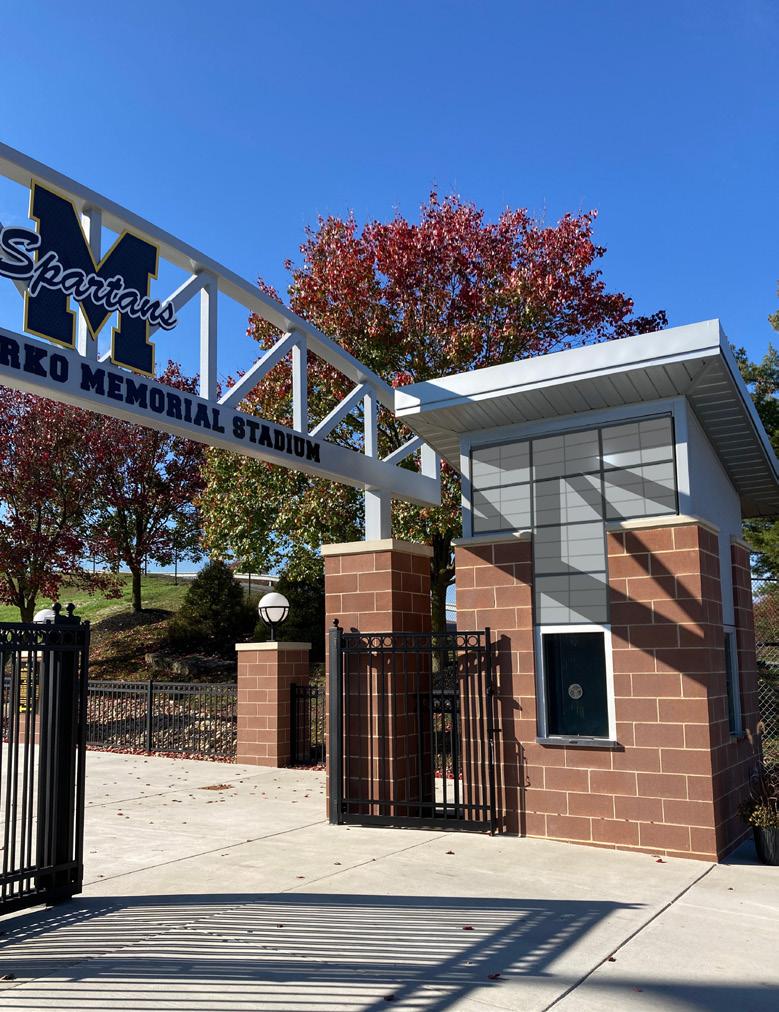





BY ALLIE ARTUR
According to data from the Pennsylvania Department of Education (PDE), from 2011 to 2022, there was a nearly 72% decline in the number of initial teaching certificates being issued in the commonwealth, a downturn that was visible across the country. By March of this year, there were approximately 5,500 teacher vacancies statewide. The largest of the shortages are in grades 4 through 8, all grade levels of special education, as well as in secondary-level mathematics, life and physical sciences, and career and technical education specialties.
In Allegheny County’s Hampton Township School District (HTSD), administrators are still seeing a robust number of applicants coming through their doors annually, but that number has gone from being in the thousands only a decade ago, to just hundreds today. This shortage of teachers has created more competition among regional districts who are often all interviewing the same top candidates.
“We were issuing more emergency permits than actual teaching certificates.”

“We’re fortunate, but the challenge is, as you come down to those final applicants that are really high quality, there just aren’t as many as there used to be,” says HTSD Superintendent Dr. Michael Loughead. “We can see that the pathway for folks to come on board, and the numbers of folks that are entering the profession, is just not what it was. We know that by looking at the statistics on teacher prep programs and the competition for those folks – not just in Pennsylvania, but in neighboring states.”
The staffing shift
As the country emerged from the COVID-19 pandemic, which not only prompted school closures but also early retirements and retainment challenges, public education experts nationwide began sounding the alarm that a teacher shortage was imminent.
“We got to 2019-2020, and in that 2021 year, it was the first time that we saw emergency permits outnumber newly certified teachers, so we were issuing more emergency permits than we were actual teaching certificates,” says Schuylkill Valley School District Superintendent Dr. Cathy Taschner, whose high school has a dual enrollment program for aspiring teachers through neighboring Kutztown University, both in Berks County.
“We are so fortunate in Schuylkill Valley; we have large numbers of people that do apply for our positions, but I know that is not the case in some of the positions where you’re looking for a physics teacher or a chemistry
teacher,” Taschner adds, echoing a trend Loughead says he was seeing in Hampton Township as well. “If there are only four or five certificates being issued in the state, and there are 500 school districts that each might need two or three, you can see the challenge associated with that,” she says.
According to data from the Bureau of Labor Statistics, around 300,000 public school teachers and other related staff left the education field from February 2020 to May 2022, or approximately 3% of the overall workforce nationally.
“The demand for qualified teachers is urgent – and growing,” says Dr. Rebecca West Burns, dean of the College of Education at Kutztown University, who explained the urgency is also the result of an aging workforce with the largest generation, the Baby Boomers, being at or approaching retirement age. “If we know that’s coming in five years, we can’t wait around, we have to do something now.”
Despite the urgency, however, Burns equally emphasized the importance of a four-year certification process and not lowering standards in an effort to hastily fill the pipeline. “While we need more teachers, we must do so responsibly,” she says.
Loughead explained that the question becomes: “How do you encourage folks to spend the time to go through teaching prep programs so that there are additional quality candidates?”
In addition to existing teachers leaving the field, the number of students pursuing teaching degrees is falling. One cause may be that students are now required to shoulder more of the rising cost of obtaining a four-year degree. According to a 2021 report by the National Education Association, the average total cost of one year at a public institution increased 31% from 2007-08 to 2017-18. During the same time frame, inflation-adjusted state funding for higher education declined in 41 states, including Pennsylvania, where per-student funding fell by more than 30%. In 2021, nearly half of all teachers relied on student loans to afford college degrees, and the average educator owed $58,700 in student loan debt. Add to the equation the modest salary most K-12 teachers make, and it’s easy to understand why addressing financial need is a priority.
Recognizing the value of student teachers
In 2023, Pennsylvania joined only a handful of other states –including Colorado, Maryland, Michigan and New Jersey – in providing funding within the state budget for student teachers to receive stipends during their clinical semester. Act 33 of 2023 was signed into law by Governor Josh Shapiro, which created a $10 million Educator Pipeline Support Grant Program that provides stipends to eligible student teachers in Pennsylvania. An additional $10 million was added in the 2024-25 budget, doubling the total amount of annual funding to $20 million.
Pennsylvania Senator Vincent Hughes (D – parts of Philadelphia and Montgomery), one of the policymakers who was instrumental in creating the legislation, noticed the alarming teaching certification statistics and approached then-Senator Ryan P. Aument (R – Lancaster) about working together to address the issue. The idea of a student teacher stipend was born after evaluating initiatives in other states and talking with a variety of stakeholders about how such a program could work.
Administered through the Pennsylvania Higher Education Assistance Agency (PHEAA) as the PA Student Teacher Support Program, the aim is to help address the teacher shortage in Pennsylvania and fill staffing gaps for critical education positions. It was also designed to incentivize completion at local education agencies (LEAs) and non-public schools that struggle to attract educators.
Through the grant program, student teachers enrolled in a PDEapproved teacher preparation program are eligible to receive up to $15,000 in stipends – $10,000, with an additional $5,000 for those in high-need districts. Cooperating teachers who mentor and guide student teachers are eligible for stipends of up to $2,500.
In 2023, not only did Pennsylvania become one of the first states to offer a student teacher stipend, but the commonwealth also has demonstrated it is taking the investment seriously by steadily increasing the funding to meet demand, quadrupling the amount available in less than two years’ time. At the inception of Act 33 in 2023, $10 million was allocated. Gov. Shapiro has proposed a total of $40 million in the 2025 budget.
The Pennsylvania State Education Association estimates that a total of $50 million is needed in 2025-26 in order to provide stipends of up to $15,000 to every student teacher.
Pennsylvania’s stipend amount stands out when considering the cost of living across states. While both Colorado and Maryland have the potential for students to receive larger stipends, the cost of living in both states is considerably higher than what it costs to live in Pennsylvania. Further, Pennsylvania’s stipend is for just a 12-week placement, whereas Colorado’s maximum amount is intended for a 32-week program, and Maryland’s is for 10 months.
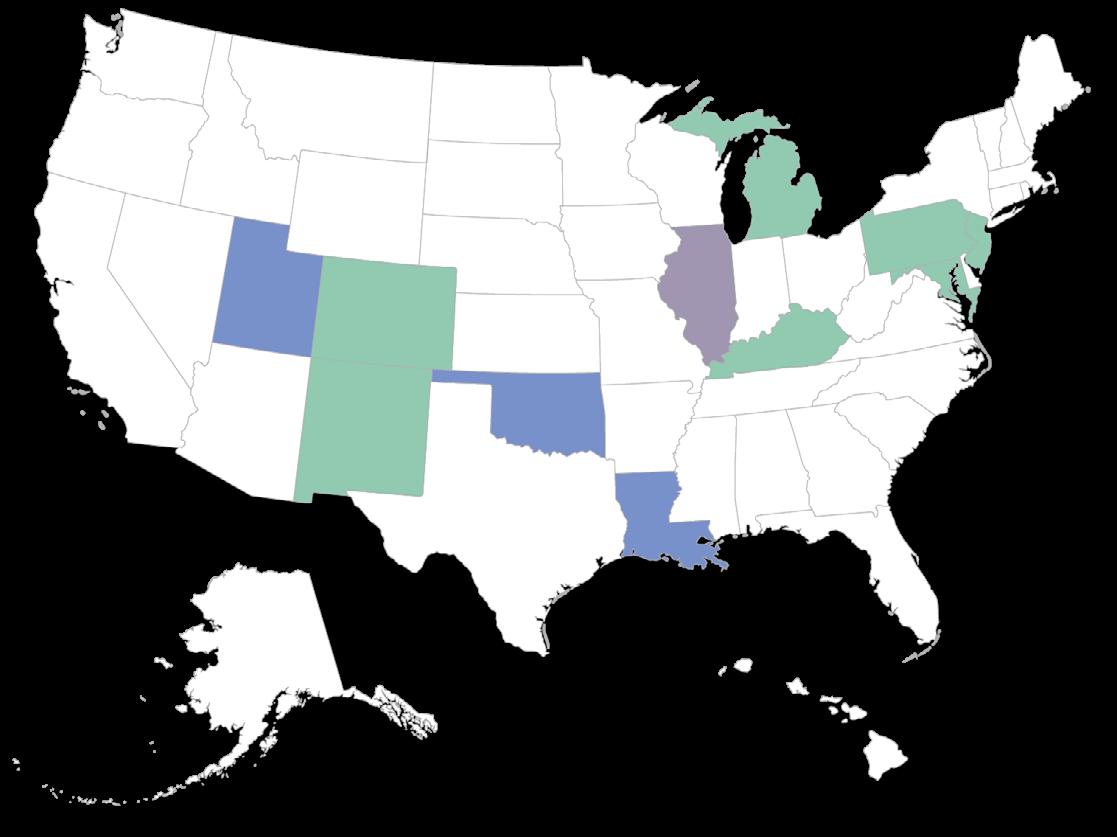
States that previously had stipends
Utah: $6,000
Louisiana: $3,300
Oklahoma: $3,250
States that currently have stipends
Colorado: $22,000
Maryland: $20,000
Pennsylvania: $15,000
New Mexico: $10,450
Michigan: $9,600
Kentucky: $5,000
New Jersey: $3,000
States with stipends moving through legislature
Illinois: $10,000
In return, student teachers must commit to teaching in Pennsylvania for at least three years following the completion of their certification, ensuring a sustainable influx of qualified educators into the state’s school systems.
For Hughes, one of the biggest hurdles was convincing 26 votes in the Senate and 102 votes in the House that this was a worthwhile investment that would yield more certified teachers annually. In order for it to be successful, he had to show that there was high demand among prospective teachers, which there was.
In just the first few hours that the application was open, over 4,000 people applied for the stipend – well over the amount that could be covered by the initial $10 million set aside for the program – thus, prompting the governor to double the amount of available funding. Stipends are awarded to applicants on a first-come, first-served basis, which means that while 2,118 stipends were approved in this first year the funding was available, there were still nearly 2,200 applicants statewide who did not receive a stipend.
At Kutztown, where 137 of 296 student teachers received the stipend during the 2024-25 academic year, faculty and staff in the College of Education work hard to ensure that students are well-informed about the grant and the application process.
Emily Sands, who just graduated with her bachelor’s degree from Kutztown with an initial certification in K-12 Spanish, was one of the university’s 137 students who was approved for the stipend for the spring semester. She says the application was fairly brief, though it was important to stay on top of communications throughout the process, even more so once she was assigned to her LEA, where she was ultimately hired for a teaching position.
Overall, she felt the stipend was a good cushion to ensure that she has the financial flexibility to be able to buy materials and resources not covered by the school district to create her future classroom, especially as a first-year teacher. “I think it’s nice to know that I am being provided money where I can go out and get these things to build a classroom and an environment that feels good and peaceful to the students, where they feel safe,” Sands says.
According to a press release from the Office
of Gov. Shapiro, the stipend program was not just created to meet the increasing demand for educators, but to also ease the financial burdens faced by student teachers, who often forgo income while shouldering extra costs. Because student teaching is a full-time commitment for the semester, students are often unable to maintain paid employment during this time, although their expenses may have increased.
“Unlike many other professions, teacher preparation comes with added expenses that can discourage even the most committed students,” Burns says, detailing expenses that often go unseen but can be significant barriers to entry, such as clearances, tuberculosis testing, certification exams, professional dress, transportation and more. “All of these things factor into the additional costs connected to becoming certified.”
Not only does the financial support offered by the state make it more feasible for prospective educators to complete their training and pursue careers in the field, Loughead notes it also demonstrates that student teachers are valued. “It does add a level of respect for the work that you’re doing both in the school district, but also in

your coursework for the university,” he says, highlighting that student teachers are not just working full time, but are often paying the university to receive their course credits as well. “I think it recognizes that you’re really coming full time and working every day and prepping every night; you really can’t be doing other jobs at that time.”
Burns, who emphasized the importance of ensuring student teachers have enough money to meet basic needs during their training, believes the stipend helps bridge that gap and allows them to thrive. “It was nice to have the stipend,” Sands says. “Some of the free time I had I actually spent going to the plays that my placement had on the weekends, going to the Mini-THON or the prom. I felt like I was a real teacher, getting paid in some way, so I could fully immerse myself in student teaching.”
The Student Teacher Support Program is just one of a number of the commonwealth’s initiatives to combat the teacher shortage and may be contributing to a rise in the number of educators. According to PDE, there was an increase of 793 newly certified pre-K–4 educators, 85 more health and physical pre-K–12 educators and 762 more pK–12 special educators in the state over the past two years.

Although it is too soon to tell what level of impact the stipend will have on expanding the applicant pool in HTSD, Loughead is hopeful. “As a public school superintendent, in our recruiting, we’re hoping it’s going to encourage folks to stick with the prep program and do their student teaching,” he says. “The jobs are there, the training is there, and we need you.”
“Pennsylvania is leading the way with the student teaching stipend, showing what great policy can look like in addressing the teacher shortage.”
At Kutztown, Burns says they saw a 16.7% increase in the number of undergraduates enrolled in their teacher licensure programs when compared to the same time last year. “There’s no silver bullet that’s going to fix everything, but what will help is a thoughtful, systemic partnership approach,” she says. “I really see Pennsylvania, and Governor Shapiro’s emphasis on the student teaching stipend, as leading the way for what can be done to ensure that people coming out are well-prepared. Pennsylvania is showing people an alternative to what great policy looks like in addressing the teacher shortage.”
A spokesperson for Hughes’ office shared in an email that the best indicator of the Student Teacher Support Program’s success is the number of applicants, and ultimately, the number of teachers being certified on an annual basis. Adjustments have already been made along the way in response to feedback shared with PHEAA in the first year.
This past March, PHEAA opened the latest round of applications for the Student Teacher Support Program. As of May 12, more than 3,250 applications for the 2025-26 academic year had already been submitted, funding for which will be dictated by the 2025-26 state budget.
At a press event for the stipend program that was held earlier this year, Hughes –emphasizing the demand among student teachers – advocated for doubling the funding yet again, to $40 million, an amount that Gov. Shapiro ultimately included in his proposed 2025 budget. Hughes stated he would like to see that amount eventually reach $70 million.
“We’ve got to keep that going because we’ve got to make sure that when we put this pressure on these student teachers to be in classrooms for 12 weeks without compensation, we’ve got to respond to that,” Hughes had said to attendees at the time, stating his intentions are to continue to advocate for the increased funding.
For Hughes, fully funding the program means that the state is covering the funds for the student teacher, the cooperating teacher and the additional amount for the high-need districts.
Taschner, referring to herself as a perpetual optimist, sees the teaching landscape shifting in the right direction. “I do believe that this work, at whatever level it can be funded, will greatly impact teacher retention, and will increase and put people in the teacher pipeline,” she says. “If early signs are any indication, we are on a better trajectory for sure.”

BY PETE CROATTO
Pete Croatto is a freelance writer based in Dryden, NY, who has written for a wide range of publications, including The New York Times, Philadelphia Magazine, the Toronto Star and AARP the Magazine.
While school districts offer enduring stability, the rotation of school directors brings fresh ideas, renewed energy and opportunities for continuous improvement. Each year presents a chance to strengthen collaboration, build trust and focus on what matters most – student success.
The Wattsburg Area School District in Erie County exemplifies this mindset. Its school board doesn’t view conflict as inevitable – especially not among its own members. Instead, new school directors are welcomed with a clear message: Work together for a greater purpose. That message starts at the top.
“There are nine people, nine voices,” says Wattsburg Area Superintendent Dr. Ken Berlin. “You can’t take sides. You can only be on the side of what’s best for the kids, the district.”
It’s a philosophy that applies to everyone, but living it takes intention. According to Berlin, it’s about creating a culture where, no matter who sits on the board, “the positive momentum of the school district continues to move forward.”
Achieving that requires more than good intentions – it takes education, teamwork among the Team of 10 and leadership by example.
The strategy to welcome and empower new school directors in the Wattsburg Area School District is rooted in thoughtful leadership and a commitment to unity. Berlin and Dr. Andy Pushchak – a veteran school director and current board treasurer – have spent over a decade refining a process that fosters collaboration and continuity.
It begins shortly after the November election results are certified and before the December reorganization meeting. Berlin and the current board president host a welcoming orientation for incoming directors, featuring a PowerPoint presentation that outlines their role, responsibilities and guidance on effective communication with the public.
To support new school directors further, Berlin provides a comprehensive 27-page orientation guide. It includes practical
tools such as the district’s email protocol, meeting policies and a still-relevant article – despite being nearly 25 years old – titled “12 Mistakes Board Members Make.” The article encourages directors to stay focused on students and district goals, and to avoid distractions that can hinder progress.
This proactive approach helps establish a strong foundation for the board’s work. “An individual does not act on behalf of the board,” explains Wattsburg Area’s board president, Brian Young, reinforcing Berlin’s message. “Our powers are authorized as a unified team.”
While some new directors may arrive with personal goals or specific issues in mind, they quickly learn that meaningful change happens through collective decisionmaking. “They need to understand that they can only make a decision as a nine-member board during a board meeting,” Pushchak says. When expectations align with the realities of governance, directors are more likely to stay engaged and contribute to the district’s forward momentum.

The support for new school directors doesn’t end with orientation; it continues through consistent, transparent communication.
Each week, Berlin sends an email update to all school directors, keeping them informed about district developments, upcoming decisions and relevant background information. Over the years, he’s written
“The board never, ever, ever sees anything at a meeting that hasn’t already been previewed in a weekly update, complete with supporting facts or links to data.”
more than 500 of these updates. To help new directors get up to speed, Berlin typically shares the 20 most recent installments as a starting point.
These updates do more than inform –they empower. They include reminders about the PA Public School Code, budget considerations and other key topics that help directors come to meetings prepared and confident. As Pushchak explains, this preparation leads to efficient, focused board meetings that typically last just 45 minutes to an hour. “A lot of analysis has taken place ahead of time,” he says. “We come with thoughtful questions and if Ken doesn’t have an answer right away, he always follows up – either in the next weekly update or at the following meeting.”
Young says he once assumed board meetings would feel like pop quizzes, with members encountering issues for the first time. But Berlin’s commitment to what he calls “message discipline” ensures that never happens. “The board never, ever, ever sees anything at a meeting that hasn’t already been previewed in a weekly update, complete with supporting facts or links to data,” Berlin says. (Learn more about the “no surprises” rule and other recommendations in PSBA’s Essentials of School Board Service in the myPSBA Resource Library.)
This “no surprises” approach fosters trust and professionalism. It also sets clear expectations; directors who stay engaged with the weekly updates are well-prepared to contribute meaningfully. “That doesn’t mean you can’t ask questions or raise concerns,” Pushchak adds. “But there’s a shared responsibility to come prepared.” Work sessions provide space for deeper discussion, while board meetings are focused on action. “That’s the time to conduct the business of the board,” Pushchak says.
Young believes Berlin’s approach is a model for effective leadership. “Superintendents have a real opportunity to shape board
culture – through clear communication, professionalism and consistency,” he says. “Ken does that exceptionally well. He creates a sense of confidence and shared purpose that helps the board function at a high level.”

The art of ‘getting it’ Even with strong onboarding and communication, growth is a journey – and support continues along the way.
As board president, Young is always willing to connect one-on-one with directors who may be struggling. When complex or sensitive topics arise, he believes in choosing the best messenger – like having the finance chair explain a budget issue – to ensure clarity and build understanding.
In one past election cycle, when a newly elected director had difficulty adjusting to the role, the board responded with intention and care. “We doubled down on policies, procedures and practices,” Pushchak says. The superintendent and board president increased communication, aiming to guide the new member privately and constructively. “We were fortunate that things smoothed out,” Pushchak says. “We want every board member to feel like a valued part of the team – and to understand the responsibilities that come with that.”
Regular updates to the board from the superintendent are more than just a courtesy; they’re a key part of building a well-informed, high-functioning board. These communications help directors prepare for meetings, understand upcoming decisions and stay aligned with district priorities.
School directors are encouraged to review these updates regularly, as they often include links to relevant data, policy references and context for agenda items. This proactive approach supports the district’s “no surprises” philosophy and reflects the expectations outlined in Board Operations Policy (003) and the district’s approved board protocols.
Engaged directors who take time to read, reflect and ask questions contribute to a culture of collaboration and professionalism, ensuring the board can focus on what matters most – serving students and supporting the district’s mission.
So when does that comprehension click? When curiosity replaces confusion. Pushchak and Berlin agree that a turning point comes when new directors begin asking thoughtful questions – not because they’re unsure, but because they want to deepen their understanding.
“I know they’re getting it when they reach out and say, ‘Hey, can you explain this to me?’” Berlin says. “That’s when I know they’re committed to working together and making informed decisions. They want to understand the ‘why’ behind what we do, and that’s a great sign.”
When the Team of 10 works in harmony, the results speak for themselves, even if the collaboration goes unnoticed. But when challenges arise, the importance of a strong, unified team becomes clear.
Serving on a school board may not always come with recognition, but many individuals step up with a genuine desire to contribute. In Pennsylvania, candidates must meet basic eligibility requirements outlined in the PA Public School Code, including residency in the district for at least one year prior to the election and demonstrating good moral character. They also cannot be employed by the district they seek to represent.
Pushchak emphasizes that resources are readily available to help prospective candidates get started. “PSBA has many tools to guide people through the process, especially around signature petitions,” he says. “We’re happy to share those resources, and then we encourage them to take the next step – get on the ballot, attend meetings and become more informed.” (Find these resources at GreatPASchools.com.)
A cohesive board is essential – not only for
smooth operations, but also for attracting and retaining talented staff. A board that communicates well and stays focused on student-centered goals helps create a positive environment across the district. Having clear policies and procedures in place supports this culture and helps maintain consistency year after year.
“If I leave here having helped draft strong administrative regulations and advised the board on sound policies, I know that will help carry things forward,” Berlin says. “It’s not going to be perfect, but it’s not a perfect system.” It doesn’t have to be.
Pushchak agrees. “We’ve faced situations where we weren’t sure how things would unfold,” he says. “But we relied on the foundation we’ve built, and it worked. That’s the power of preparation, teamwork and a shared commitment to doing what’s best for the district.”



"My worry though, is that learners are going to use this to embrace a Tourist kind of perspective — that they're going to take shortcuts and just say, 'I'm really just interested in getting to the destination.' I think that most of learning is embedded in the process. Generative AI is just going to help you get to the end, the finish line. And I worry that is going to really short-change some learning."

Dr. Oliver Dreon, professor and coordinator of the Master of Education Program in Assessment, Curriculum & Teaching at Millersville University, presented at the PSBA Institute’s AI Symposium last spring. His professional experience intersects both education and technology. In this interview with School Leader Bulletin, he describes the changes he’s observed in ed tech tools and applications over the past few decades and discusses the considerations for today’s school leaders who are tasked with teaching, utilizing and modeling smart and ethical use of artificial intelligence (AI). The interview has been edited for length.
Tell us about your background with AI and education.
I was a middle school and high school teacher for 15 years before coming to Millersville about 18 years ago. In my role at Millersville, I mainly work around educational and instructional technology and that has changed a lot. When I first came to Millersville, a lot of it was Web 2.0 technologies like blogs and wikis. And then it morphed into online teaching, blended learning and how to use technology to support synchronous and asynchronous instruction.
When ChatGPT exploded onto the landscape of technology and education, it was just a game-changer. Right around December of 2022, I started really seeing the possibilities with it and the challenges that we would face in higher ed and in K-12 education. At Millersville, we formed a task force to change our policies and educate our colleagues and administration about what the capabilities and cautions could be, because we were aware that this was going
to be pretty impactful. We started seeing students who were using [AI-generated content] and trying to pass it off as their own. There were so many myths around AI in the beginning, as to what it could and couldn't do. Building capacity was a critical thing.
What are some ways AI is changing the K-12 and postsecondary educational landscape?
At its best, AI is a thought partner, it's an aide, it's a private tutor. If you're working on a project, you can get some fresh ideas and perspectives. It has all of this promise to really support creative individuals. It can give me ways to create new discussions for my class or maybe create new activities or assignments or personalize things for the students I work with. At its worst, it's a shortcut for people to present work that isn't theirs.
[Travel writer] Rick Steves talks about how there's three ways you can travel in the world – as a Tourist, a Traveler or a Pilgrim. A Tourist is that person who just gets off the bus, takes a bunch of pictures and gets back on the bus, doesn't really engage with the local culture. They're not really learning. Travelers go and engage with the community because they want to learn about the community. But then there are the Pilgrims that want to visit someplace and come back fundamentally changed. And I think that's the thing that education can offer folks – the ability to not just learn but to be changed in the process.
My worry though, is that learners are going to use this to embrace a Tourist kind of perspective that they're going to take
"I think what we're going to tend to focus a lot more on now is process versus product, so we can see that skill in development over time. If we just focus on the product, then we're not going to really get a sense of what was contributed by the student and what was contributed by technology."
those shortcuts and just say, “I'm really just interested about getting to the destination.” I think that most of learning is embedded in the process. Generative AI is just going to help you get to the end, the finish line. And I worry that is going to really short-change some learning.
I see this as really an opportunity to create independent learners. But I also worry about the accuracy issues. Generative AI creates all kinds of misinformation and some of that can be harmful. We need to develop this skepticism, a critical thinking lens, so that when people interact with content, they just don't assume that it's correct, that they fact check it.

What feedback are you hearing from individuals in K-12 and higher ed?
I would say it's a pretty mixed bag. There are there are some folks who are really concerned about academic dishonesty. That's really hard to navigate because a lot of the detectors out there are not accurate, and the information they give sometimes really privileges certain communities over others; if you’re somebody who is learning to write or speak English, sometimes the writing is very nontraditional and so the detectors flag those and that's a concern.
There are schools that are banning generative AI. But that's the same thing that happened with, grammar checker, spell checker, Wikipedia, calculators and all the technological advancements over the
years. I think that some people worry that the skills that students have are going to diminish. I get that. I think what we're going to tend to focus a lot more on now is process versus product, so we can see that skill in development over time. If we just focus on the product, then we're not going to really get a sense of what was contributed by the student and what was contributed by technology.
What do you think using AI successfully in the educational setting looks like from a very practical point of view?
I think this is going to be a game-changer for us in terms of how we address individual needs for students, because schools are diverse places and we have students with diverse needs. Ten years ago, if I was a teacher, and a student came in who was learning English, I had very limited technologies and things that I could do to support them. Now, I can use all sorts of AIbased tools to translate, create supports, and personalize the materials for that student or for any student. And there's just so many really cool tools out there that help us reach students, whatever their needs are.
But the concern with all of these is how do you teach responsible and ethical use? I wouldn't want a teacher uploading all kinds of personal information about a student to be able to say, “How do I work with this kid?” That’s where the real ethical boundary is. We want to make sure that everybody has a real good sense of how to do this without sharing private information or doing stuff that’s irresponsible. That’s where teacher education comes in.
What are some of those essential skills that educators need to develop in terms of AI?
The basic skills that they need to learn are prompt writing, prompt engineering. And the way that people are going to be able to do that is by learning some of the elements to include and recognizing how the things that we offer in our prompts cause the generation to be different. There also needs to be an understanding of what the technology is doing. Basically, it's a big prediction machine, it's statistics. You're not going to a static webpage with content.
All of this data AI uses is human generated. So, all of the AI-produced content is going to have these elements of our biases reflected


back to us. I think that's a critical skill too, helping students and users in general be conscious of the fact that this is not truth. That's responsible use, learning what kinds of information to share.
Another skill is recognizing the best tools. It’s hard to say because there are always new ones coming out. There is this economic piece to it, too. The tools are not free, they're being offered for free. But the currency is our use and the things we're sharing. We're paying by how we use it and the information we share, because we're constantly training it.
There are so many societal and environmental impacts. For example, when you put “Give me a recipe for a chocolate chip cookie recipe” in a search engine that is not connected to an AI, the amount of energy that would take to just find a static webpage versus generating a recipe – they're orders-of-magnitude different.
How can people protect student data when they're using AI?
When I work with teachers and students, I tell them that any personally identifying information is something that they should not share. I would never have a student upload an IEP or any sort of evaluation reports or assessments. I'd be really conscious of uploading something and saying, “Give me feedback on the student’s paper,” because it's their work and it's now in the sea of information out there. I want to protect not just students’ private information but also their creative work, too.
I did something in Gemini and I did the same thing in ChatGPT and the responses were so widely different, so I looked at why. I've been using ChatGPT for almost 3 1/2 years now. It has learned about me, it has this big, huge laundry list of things that it thinks I am. Some of it is true and some of it's not, but it's in my history. It’s learning from you, it learns your search history or your prompting history. That's a whole other area here that we have to educate people on. How do you manage your personal information? How do you manage your search histories and your prompt writing and all that? It's changing how vigilant we have to be.
Give a brief overview of the content covered in the Foundational AI for School Leaders certificate program. AI is the most transformational thing that's happened in my career. With calculators,

with, the internet, with computers, it was a slow climb to developing a user base. That is not the case with AI. Every individual who has a smartphone or a laptop has access so there's a need for professional development for lots of people.
With school leaders, they're the ones who are going to be in the position to select technologies and also develop policies around AI. So I've been working with some of our local principals and superintendents. With PSBA, we've developed an asynchronous course, about 8 to 10 hours, designed to be a foundational course. It teaches some basics with prompt writing, understanding what the technology can do, some of the responsible and ethical things about it, and some of the legal things, not just with copyright, but also with FERPA and IDEA.
The first module is just understanding how AI works. The second module is all about how AI generates content and prompt writing for school leaders. Then there's a legal module. Module 4 is about responsible administrative use. It’s not just the law, but it's the law applied and talking about policy. The last one is a leadership aspect, like what are some considerations school leaders should have when they're talking about leading for innovation in their schools? So, it moves from knowledge to application and practice.
Scan the QR code to learn more about this certificate program and register on PennSSI.org.
Introducing the GPS Learning Lab, a mobile, high-tech, interactive training and content exploration experience designed to bring impactful, hands-on learning directly to your district! Starting this fall, PSBA members can host the lab for a full week at your schools.
Choose your (learning) adventures
This innovative lab serving Pennsylvania’s public schools provides learning experiences suited for multiple audiences, including students, district administration and staff, and school boards. Participants may choose from a flexible training menu, interactive scenarios and content from experts that go beyond traditional instruction to enhance initiatives already in place within your district. The GPS Learning Lab engages the whole learning community with options that will continue to expand.

District administrators and staff can participate in training topics such as de-escalation techniques, student behavior management and situational awareness, all designed to equip faculty and staff with practical, real-world skills. These interactive scenarios allow for district teams to respond to situations in the moment and debrief with colleagues on local practices and procedures.

Student participants can explore exciting career pathways in high-demand and emerging industries through a partnership with the Pennsylvania College of Technology. Through this content set, students can explore six different career areas that are high demand – such as physical therapy assistant, surgical technology and emergency management – or emergent fields such as power generation, polymers and nondestructive testing. Faculty experts and students in each career area highlight key aspects of their field.
Students interested in military service can learn about roles in the Army and Air Force, through content supported by the Department of Military and Veteran Affairs. Army career paths include helicopter pilot, cyber soldier, recruiting, combat medic, military lead instructor, training coordinator and wheeled vehicle mechanic. Air Force career exploration includes roles such as recruiter, UH 60 helicopter pilot and heavy equipment operator.
In addition, students can receive Safe2Say Something training — developed in collaboration with the Pennsylvania Attorney General’s Office — which empowers them to recognize warning signs, report concerns responsibly and help create a safer school environment. This content provides participants with an overview of how the Safe2Say Something system is to be used, illustrated by four of the most commonly reported scenarios students may see in their schools. This format allows the district educators to discuss different situations and the best actions to take to keep classmates and school communities safe.
Each of the student content areas is supplemented with resources for educators, which may include pre- and post-Learning Lab activities for further content exploration.

Governance teams can engage in a cybersecurity tabletop exercise that simulates a data breach, helping them understand and prepare for real-world digital threats.
By hosting the GPS Learning Lab, your district gains access to a customizable, impactful experience that supports both educational and safety goals. It’s more than training — it’s a catalyst for growth, awareness and preparedness. Just follow the steps below to get started!

1. Member districts that wish to host the lab at their district should submit a request form, available later this year on the Great PA Schools website, GreatPASchools.com and designate a district coordinator to help implement the visit.
2. Once the visit has been approved and scheduled, GPS staff will provide an operations guide and training video prior to the lab’s arrival.
3. When the lab arrives on-site, GPS staff will complete setup and provide the district coordinator with a brief orientation to ensure a successful learning experience.
PSBA purchased the GPS Learning Lab through a generous grant from the PSBA Trust.

FIRST-TERM SCHOOL BOARD DIRECTOR AT THE CHESTER UPLAND SCHOOL DISTRICT
1
What motivated you to become involved in board service?
Having dedicated over a decade to advocacy work focused on parent engagement, district transparency and accountability, I became increasingly curious about where the breakdowns were occurring. It's impossible to grasp the entirety of a situation from a single vantage point. My perspective from the community was valuable, but I needed to understand what it looked like from the board seat. This curiosity led me to run for the board, and I can unequivocally state that the experiences from both seats are vastly different.
2 3
What issue in public education is most important to you right now?
For me, adult accountability is paramount. It's essential that our parents become more engaged, our teachers remain connected and invested, our district leaders comprehend the needs and desires of the community and staff, and our legislators trust our judgment and lead effectively.
What is a fun fact about yourself or a board-related accomplishment you would like to share?
I played the clarinet in middle and high school, eventually earning the first chair. During my school years, music was a saving grace and continues to provide comfort to this day.

In what ways is artificial intelligence (AI) being strategically implemented in the classroom or elsewhere in your district?
South Fayette has strategically integrated AI to enhance teaching, learning and operational efficiency. With Teach FX, educators can analyze classroom discussions to ensure equitable student participation and refine instructional strategies. AI-powered tools also support personalized learning pathways, assist in writing and research, and provide real-time feedback. South Fayette’s educators are implementing AI tools, such as Magicschool.ai, Drift, Khanmigo and Brisk AI, for assistance in designing lessons and differentiating instruction. They also utilize AI to assist them with efficiencies in their own tasks and planning.
Districtwide, AI curriculum has been implemented in our STEAM classes. Elementary-age learners explore machine learning and data science. In middle school, the exploration of data science is expanded and students begin to understand generative AI, including its ethical use and future implications.
To support the effective and safe use of AI, teachers have access to AI training modules, hands-on workshops, and discussions on AI ethics, prompt engineering and classroom integration. We also encourage sandboxing, allowing educators to tinker with AI tools to discover their instructional potential. Training for all learners emphasizes digital literacy, responsible AI use and real-world applications.
As a future-focused, student-centered and innovationdriven district, South Fayette will continue encouraging educators to explore AI for curriculum design, efficiency in grading and student engagement, including ethical AI awareness. We aim to expand AI-driven tools that personalize learning experiences and provide real-time insights to support student progress. Departments and programs across the district are investigating ways to further incorporate AI into the curriculum. Specifically, the cybersecurity, business and engineering-related courses include AI in their career pathways, and the orchestra program is exploring AI in music creation.
South Fayette is also working to help educators expand their knowledge of AI by providing professional development opportunities.
Though our district includes a wide socioeconomic range within our population, we are fortunate to be able to provide all of our learners with many state-of-the-art resources and opportunities. Even with access to the tools and technology, we share universal concerns as AI becomes more prevalent in schools:
• Bias in large language models: Ensuring students recognize AI-generated bias and develop strong media literacy skills
• Student data privacy and safety: Establishing strict protocols to safeguard student information when using AI tools
• Equity in access and implementation: Ensuring all educators and students can leverage AI’s benefits, regardless of experience or resources
• Procurement of AI tools: Ensuring that resources are vetted and are safe for student use
For additional information about the innovative programs offered in the South Fayette Township School District, please scan this QR code.

Ask the Staff addresses a member question from the perspective of several PSBA staff experts. Respondents will rotate each issue, depending on the topic.
What are some ways our board can gain insight on our strengths and areas for growth, for the purpose of enhancing our effectiveness?
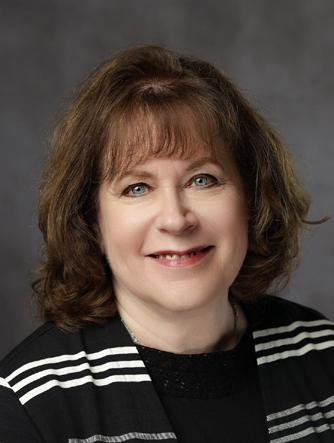

Continuous evaluation is fundamental to effective school board service. In daily life, we naturally assess our choices — what to wear, eat or do — drawing on experience to improve our decisions. This same mindset is essential for school board directors, whose decisions directly impact student outcomes.
Serving on a school board means navigating complex, sometimes highly emotional, issues. To make sound decisions, school board directors must consistently evaluate what is working, what needs improvement and how best to achieve district goals. This ongoing process — using feedback, data and reflection — enables timely adjustments and better-informed governance.
Continuous evaluation is not just about assessing others; it starts with self-assessment. School board directors should regularly reflect on their own strengths and areas for growth. Professional development is vital, equipping directors with the skills to analyze, adapt and lead effectively. This commitment models lifelong learning for the entire district.
Throughout the year, school board directors should evaluate the superintendent’s performance, monitor financial trends, review assessment data, and assess the progress of facilities and initiatives. Aligning superintendent, district and board goals ensures collective focus and accountability. Open communication, flexibility and a willingness to adapt are all strengthened through a culture of continuous evaluation.
Ultimately, making evaluation a routine part of board service leads to better decisions and stronger outcomes for all students. It transforms challenges into opportunities for growth and makes board service both more impactful and rewarding. Continuous evaluation is not just a best practice — it is essential to fulfilling the board’s mission.
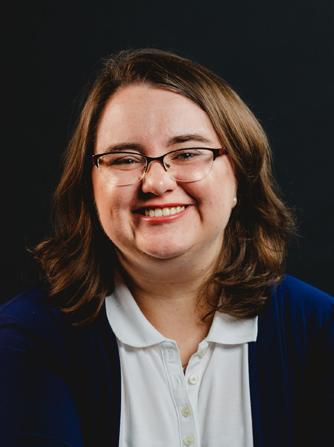
Centered around the Principles for Governance and Leadership, PSBA’s board self-assessment (BSA) service provides school boards with an opportunity to reflect on their current collective performance openly, honestly and confidentially. Included in PSBA membership for school districts, the BSA is comprised of an anonymous digital survey that is sent to the Team of 10 (nine members of the board and the superintendent).
In the BSA survey, participants are asked to consider their board’s performance within each of the seven Principles for Governance and Leadership and the corresponding action statements. In addition, there is an opportunity to provide comments that include supporting evidence and suggestions for improvement for each principle.
After the survey results are ready, it is key for the board to discuss the results and identify possible areas for the team’s development. Through an optional Discussion of Results, a PSBA professional facilitates an open, honest conversation on the highlights of the results. Another elective tool that may accompany the BSA’s results is a customized Professional Development Guide. This guide features publications, online courses, workshops and more that may assist the Team of 10 in its collective professional development.
Under the principle Evaluate Continuously, it is recommended for school boards to participate in a BSA on a recurring basis. This allows the board to check on its progress in previously identified areas of growth, as well as identify new areas that could be addressed. By participating in a cycle of self-evaluation, the board can take proactive steps to ensure they are working as an effective governance team on behalf of their school district.
PSBA’s Principles for Governance and Leadership help school boards lead with integrity, vision and accountability — strengthening board effectiveness and supporting student success. To access the Principles, see the Our Impact page on psba.org.
Receive
Match priorities to budgets
Schedule needed housekeeping, maintenance, repair, restoration or replacement.



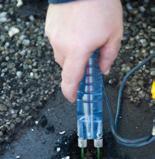
Work the plan
Ensure watertight building envelopes within predicted budgets.










By Amanda Daniels
Developing original business concepts for utilizing glass to improve lives isn’t the kind of challenge most high school sophomores have the opportunity to undertake. However, several dozen students in the Eastern Lebanon County School District (ELCO) did just that through their involvement in the SCHOTT Pharma Innovation Challenge –and two students from the district won first and second place in the national competition.
High school chemistry teacher Jim Thomas learned of the competition through SCHOTT Pharma’s involvement in Educator in the Workforce tours, where teachers are invited to tour local businesses to help them better prepare their students for the workforce. SCHOTT Pharma is an international pharmaceutical packaging and laboratory analysis company, with a location in Lebanon, PA.
“After visiting SCHOTT Pharma in the fall, Jim learned about the Innovation Challenge and decided to present it to his class. In addition to the challenge guidelines, he gave an overview of SCHOTT Pharma and talked about the process of glass making/ manufacturing,” says Jennifer Martin, Eastern Lebanon County High School Future Ready facilitator. “From there, students ran with the opportunity and rose to the challenge by developing their ideas for the competition. The students were motivated, engaged and creative — the foundation for personal growth, academic excellence and lifelong learning.”
Two students, Adelina Wolfe and Aryana Haislip, pictured left and right, respectively were among the 13 students who submitted entries

to the Innovation Challenge. Wolfe’s design was a proposal for biodegradable glass, offering a solution for sustainability within the industry. She won first place nationwide with her concept.
Coming in second place in the nation was Haislip, with a design for self-darkening safety glass that uses adaptive materials to adjust to lighting conditions and touch, making the glass ideal for school safety situations.
As winners, the students were invited to an awards ceremony at the SCHOTT Pharma facility in Lebanon and were each awarded a monetary gift. Wolfe and Haislip were also recognized during an ELCO school board meeting.
ELCO’s commitment to innovation is opening doors to new opportunities, transforming challenges into experiences that empower learners to address real-world challenges and setting them up to succeed in a dynamic world beyond high school.
As Martin says, “The Innovation Challenge aligned with the district’s strategic plan supporting equitable opportunities that allow students to thrive and be ready for the opportunities that await them upon graduation. This project truly enhanced the curriculum by blending real-world problem-solving and student-led inquiry, allowing the kids to apply academic knowledge in ways that were meaningful and impactful.”
Read more about the winners and the Innovation Challenge on the Great PA Schools website, GreatPASchools.com.

For more answers, visit the myPSBA Resource Library under the Gain Knowledge tab.
Each issue of School Leader Bulletin features questions and answers that can be found in various PSBA publications. In this issue, the content comes from the Essentials of School Board Service. Find the digital version on myPSBA in the Resource Library under the Gain Knowledge tab.
Q: What is the Team of 10?
A: This phrase is often used to define the entire board of elected school directors and the superintendent as a leadership team. The PA Public School Code (24 P.S. §10-1081) states that “The district superintendent shall have a seat on the board of school directors of the district, and a right to speak on all matters before the board, but not to vote.” Elected school directors, who represent their community, and superintendents, who provide extensive educational experience and expertise, join together on behalf of the education of all students.
Q: How do I assimilate into the school board team?
A: In most cases, you will be joining a board with members who have worked together for several years. They have shared experiences that you do not, so it will take time to become part of the team. Veteran school directors can be a resource. By referencing their experience, these school directors can offer guidance on matters they wish they had known about in their first year of service. Many boards across Pennsylvania rely on their veteran directors to support new board director orientation.
If veteran members mention a shared experience, it is appropriate to ask for more information. School directors usually enjoy discussing stories of their time on the board, and your interest will encourage them to share. Demonstrate that you intend to be an asset to the board through your actions, be prepared for meetings, ask questions, seek advice and respect your fellow school directors.
Q: Do I need to know educational strategies or techniques in order to be a good school director?
A: How curriculum is taught is not within the school board’s purview. The district has a superintendent and an entire team of administrators and staff who are educational professionals to provide expertise on strategies and techniques that meet the needs of their students. The board approves what is taught, by approving the local academic standards and curriculum, aligned with the Pennsylvania Academic Standards approved by the State Board of Education.
Q: Are there any guides for how an effective school board should function?
A: The Principles for Governance and Leadership was updated in 2022 by a committee of experienced school directors, superintendents and school solicitors who worked together to detail the specific actions and attitudes school boards can implement to become highly effective.
Every school board in Pennsylvania is encouraged to adopt the Principles for Governance and Leadership, which is also PSBA Policy 011. It replaced the Board Governance Standards/Code of Conduct in 2015. Following adoption, PSBA recommends that school boards vote to recommit themselves to these principles every two years following board elections. Once a school entity has adopted the Principles, the school board secretary should notify PSBA.
Q: What is the “no surprises” rule?
A: Good board and superintendent relations depend on effective and respectful communication. School directors never want to be surprised by the superintendent presenting an unexpected topic at a meeting. It is equally undesirable for a school director to surprise the superintendent and board president with a question or topic that the superintendent is unprepared to discuss. When both parties commit to the “no surprises” rule, it helps to build trust and respect between the board and superintendent.
The rule should not be interpreted to mean that questions may not be asked during a board meeting. School directors should ask questions before meetings when possible, but it is certain that additional questions will generate from a presentation or deliberations during board meetings. School directors have an obligation as elected officials to have a clear understanding of the facts prior to making any decision. Obtaining answers to clarifying questions is essential to achieving that understanding. It is the responsibility of each board director to do their due diligence before casting their vote.
Q: What is the best way to approach the superintendent if I want to suggest an idea?
A: You should share your idea with the superintendent face to face, by phone or email. Ideas can be shared with the understanding that neither the individual director nor superintendent has the authority to have it go forward without consensus of the full board. The board director should follow local board culture or policy on how to move an item forward.





First grade students in the Rockwood Area School District (Somerset Co.) worked in small groups and used marshmallows, toothpicks and tape to build bridges for green salamanders. The project was in partnership with discoverED and was designed to help students learn about the impact humans have on our environment as well as ways we can help preserve nature and wildlife. The students not only put their engineering skills to work but also practiced teamwork and critical thinking.
Snapshot features photos that depict the great things happening at Pennsylvania’s public schools. Have a high-resolution photo from your school? Submit it, along with a brief description, to jackie.inouye@psba.org for consideration.

Q: What key educational issues would you like to see advanced in Pennsylvania?
As the new chair of the Senate Education Committee, I’m focused on building a stronger, fairer and future-ready education system in Pennsylvania for all students. One of my main goals is structured literacy implementation in every school. The science of reading research is clear – this explicit and systematic approach to teaching reading is the most effective way to build those essential foundational skills kids need for lifelong learning. It's especially important for young learners and those who find reading a challenge. That's why a key initiative will be securing robust, ongoing professional development to empower Pennsylvania educators with the best tools and training in structured literacy methods, transforming reading instruction and improving literacy outcomes for all students. Secondly, we must address educator and administrator recruitment and retention – it’s paramount. Pennsylvania is finding it harder to attract and keep talented educators. Finally, let’s talk future: expanding career and technical education (CTE) and strengthening workforce development, especially in high-demand fields like AI and advanced tech, is vital for Pennsylvania’s economic future. CTE programs give students direct routes to skilled careers, and we need to make sure these programs are modern, forward-thinking and linked with the jobs of tomorrow. For me, it comes down to these four areas – the children, literacy, our educators and workforce readiness – these are my core commitments as chair.
Q: Can you provide a useful advocacy tip to school directors across the state?
Effective public school advocacy is essential for those of us in Harrisburg to understand the issues our local schools are facing. For that advocacy to be effective, however, we must hear directly from our school board directors, as well as superintendents, principals and teachers. I want to know what is important to all 20
school districts in the 27th Senatorial District – from Midd-West in Snyder County to Crestwood in Luzerne County. And now that I am Education Committee chair, I anticipate hearing from districts across the state – both directly and through my colleagues in the Senate. It is important that school directors establish relationships with their senators and representatives in order to have an open dialogue whenever the need arises to share updates, express concerns, or request support or opposition for a piece of legislation.
Released earlier this year, School District Mandates: Their Impact of Public Education highlights some of the costliest mandates and their effects. Mandates are directives from federal and state governments that require districts to take specific actions, often without adequate funding. School districts face hundreds if not thousands of them, ranging from financial audits to student safety protocols. Although the report isn’t a comprehensive list, it illustrates how mandates impact district operations.
The report categorizes mandates as either cost drivers or prescriptive. Cost driver mandates significantly impact budgets and operations, and may require hiring additional staff, altering programs, compiling reports or notifying the public of certain information. For example, districts must provide transportation not only for their own students but also for resident students attending private schools within 10 miles of district boundaries. This can lead to increased staffing, higher transportation costs and the need for more vehicles.
Prescriptive mandates, while individually less burdensome, can have a cumulative effect. One example is the requirement to use school buildings as polling places. Districts may need to close schools or add security, diverting attention and resources from education.
Most mandates are unfunded, forcing districts to make difficult choices — raising taxes, increasing class sizes, cutting staff, delaying upgrades or using reserve funds — in order to balance budgets.
The report aims to raise awareness and advocate for meaningful mandate relief to support public education in Pennsylvania. Leverage it to tell your district’s story as you communicate with legislators. Access this critical advocacy tool in the myPSBA Resource Library.


By Brady Brucato, PSDLAF, Associate Vice President, Relationship Manager, PMA
Effective cash flow management is foundational to the financial health of Pennsylvania school districts. With increasing complexity in the funding landscape and ongoing budget pressures, schools need a clear, proactive approach to ensure stability and make the most of every dollar.
At its core, cash flow management is about tracking and planning for the money coming in and going out. It allows districts to meet day-to-day obligations, avoid unnecessary borrowing and plan strategically for future needs. Understanding the three key categories –operating, investing and financing activities – gives district leaders a fuller picture of how funds are moving through the system.
Districts across Pennsylvania face some unique timing challenges. State aid and property tax revenue, the two largest funding sources, don’t always align when bills come due. Add in possible delays in federal reimbursements and statutory limits on fund balances, and it becomes clear why a strong cash flow strategy matters. Tools like short-term borrowing and thoughtful use of reserves can help bridge those gaps.
One of the most effective tools in the toolbox is cash flow forecasting. Looking ahead and estimating when funds will be received, and when expenses will hit, helps anticipate shortages or surpluses before they happen. Reviewing historical trends and understanding the timing of aid payments and tax receipts can make these projections more reliable and actionable.

When school entities maintain a healthy cash position, they’re in a better place to make strategic investments. Fixed-rate options like U.S. treasuries and CDs can offer safety, stability and predictable returns, especially when you know your operating needs are covered.
Transparency in cash flow reporting also goes a long way. When school business officials have clear, timely information at their fingertips, it supports smarter planning and builds trust across the organization. Using plain language and visual tools can help turn complex data into something that’s easier to digest and act on.
Best practices in this area include detailed forecasting, regular monitoring, smart timing of revenues and expenditures, maximizing interest earnings, and maintaining strong internal controls. It’s also worth exploring opportunities to boost revenue where possible.
When cash flow is poorly managed, districts risk missing payments, incurring extra costs and facing operational disruptions. But when it’s done well, it creates room for smart decisions, strategic investments, long-term planning, and ultimately, better outcomes for students and communities.
• PSDLAF is the Only Local Government Investment Pool that Fully Complies with PSBA's Recommended Investment Policy
•Com petitive Inves tment Yie lds
•Rated AAAm b y Standar d & Poor’s



is Sponsored by PSBA
866-548-8634 Option 2 | www.psdlaf.org
AAAm Rating- The rating is based on Standard and Poor’s analysis of the fund’s credit quality, market price exposure, and management. The rating signifies excellent safety of Invested principal and a superior capacity to maintain a $1.00 per share net asset value. However, it should be understood that the rating is neither a “market” rating nor a recommendation to buy, hold or sell securities. This does not purport to be a complete statement of all material facts relating to securities mentioned. The information contained, while not guaranteed as to accuracy or completeness, has been obtained from sources, which we believe to be reliable. Opinions expressed herein are subject to change without notice. This notice shall not constitute an offer to sell or the solicitation of an offer to buy, nor shall there be any sale of these securities in any state in which said offer, solicitation or sale would be unlawful prior to registration or qualification under the securities law of any such state. Please refer to the PSDLAF Information Statement for any questions at www.psdlaf.org. ©2024 PMA Financial Network, LLC.
Since 2019. . .
$2,849
SECONDARY TEACHERS’ AVERAGE ANNUAL SALARIES INCREASE OF
$10,998
ELEMENTARY PRINCIPALS’ AVERAGE ANNUAL SALARIES INCREASE OF
PSBA recently completed the annual study of professional personnel position salaries scheduled for payment during the 2023-24 school year. The study breaks the professional salaries reported to the Pennsylvania Department of Education into three main classifications: total professional staff, administrative and supervisory personnel, and bargaining unit positions. Please note that the number of positions in each figure represent the number of positions for which valid data could be obtained.
For definition purposes:
Total professional staff includes all professional personnel employed in public schools – both administrative-supervisory and bargaining unit personnel – as a total composite grouping.
Administrative-supervisory staff includes superintendents, assistant superintendents, central office administrators, principals and others normally considered part of the management team in most school districts.
Bargaining unit staff includes teachers, guidance counselors, nurses and other personnel normally covered by the terms of a contractual agreement under Act 195.
All comparisons are based on the statewide average annual salaries reported for each category or position.
In addition to the three main classifications studied, several individual positions found in public schools are reported to track the movement of salaries within management and bargaining unit areas. The individual position salaries studied include superintendent, secondary principal, elementary principal, secondary teacher and elementary teacher.
Specific salary data for 2023-24 reveal the following trends:
• A decrease of $254 (-0.3%) in the average annual salary of the total professional staff (Figures 1 and 2).
• An increase of $3,025 (2.6%) in the average annual salary of administrative-supervisory staff (Figures 3 and 4).
• A decrease of $536 (-0.7%) in the average annual salary of bargaining unit personnel (Figures 5 and 6).
Since 2019...
• Administrative-supervisory average annual salaries increased $10,176 (9.3%) (Figures 7 and 8).
• Bargaining unit average annual salaries increased $5,242 (7.4%) (Figures 7 and 8).
• Superintendents’ average annual salaries increased $15,276 (10.1%) (Figure 14).
• Secondary principals’ average annual salaries increased $7,826 (6.9%) (Figure 14).
• Elementary principals’ average annual salaries increased $10,998 (9.9%) (Figure 14).
• Secondary teachers’ average annual salaries increased $2,849 (4.0%), and elementary teachers’ average annual salaries increased $6,812 (9.7%) (Figure 14).
Note: 2023-24 School Management Salaries, a follow-up to this analysis that provides detailed information including salary range distributions for management positions, is available in the myPSBA Resource Library under the Gain Knowledge tab.
IN THE AVERAGE ANNUAL SALARY OF THE TOTAL PROFESSIONAL STAFF
DECREASE OF $3,025 IN THE AVERAGE ANNUAL SALARY OF ADMINISTRATIVESUPERVISORY STAFF INCREASE
DECREASE OF $536 IN THE AVERAGE ANNUAL SALARY OF BARGAINING UNIT STAFF
BARGAINING
AVERAGE
9.3% 7.4% 10.1%
SUPERINTENDENTS’ AVERAGE ANNUAL SALARIES INCREASED
SECONDARY PRINCIPALS’ AVERAGE ANNUAL SALARIES INCREASED
ELEMENTARY PRINCIPALS’ AVERAGE ANNUAL SALARIES INCREASED
SECONDARY TEACHERS’ AVERAGE ANNUAL SALARIES INCREASED
4.0% 9.7%


By Michael I. Levin, PSBA General Counsel
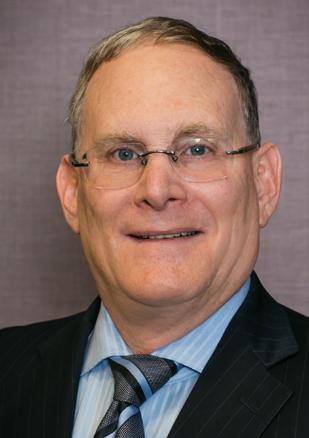
A recent headline alerted that “Hackers Stole Nearly $700K From Philadelphia School District’s Banking System.” In that article, Christy Brady, the city controller, noted that discrepancies in the district’s Automated Clearing House (ACH) system were discovered during an annual audit of the 2024 fiscal year. According to the article, “malicious actors” posing as vendors allegedly hacked into the School District of Philadelphia’s banking system several times in 2024 and diverted a total of nearly $700,000 into their own accounts. In this instance, it appears that individuals or entities managed to breach the system and request wire transfers. The individuals or entities who allegedly committed this cyberattack, along with the two vendors involved and the affected financial institutions, were not identified.
School districts, like other public entities, are increasingly reliant on electronic payment systems for efficiency and convenience. However, this dependence also makes them appealing targets for cybercriminals. This story should remind all school districts of the fundamental risk of electronic bill paying in the era of cyber malfeasance and the necessity to remain vigilant in protecting school district assets.
The risks
As school districts increasingly adopt electronic payment systems for efficiency and cost savings, it is essential to remain vigilant about the associated risks. Electronic bill paying offers many advantages – speed, convenience and automation, to name a few. However, electronic bill paying also exposes school districts to a range of potential vulnerabilities that can jeopardize financial integrity, data security and compliance. This article outlines the main risks associated with electronic bill paying and offers best practices to mitigate them.
School districts, like many businesses today, are appealing targets for cybercriminals due to the sensitive financial and personal data they manage. Cyberattacks such as phishing, ransomware and malware can compromise login credentials or redirect funds to fraudulent accounts. For example, a staff member may click on a phishing email that mimics a legitimate vendor invoice, unknowingly authorizing a payment to a hacker’s account. Additionally, school district automated financial systems are vulnerable to internal fraud and misuse. These automated systems can obscure transaction visibility, making it easier for fraudulent activities to go undetected – especially if proper segregation of duties and oversight are lacking. For instance, an employee with excessive system access may create fictitious vendors and process unauthorized payments. Furthermore, school district financial systems can also be susceptible to errors and oversights. Although automation reduces manual entry mistakes, it can allow systematic errors to persist unnoticed. Errors in vendor setup, account numbers or payment amounts can be costly and challenging to reverse. For example, a recurring payment might be set up with incorrect banking details, resulting in continuous misdirected funds.
School districts are also vulnerable to third-party risks. They often rely on third-party platforms or service providers for electronic payments. Any security weakness in a vendor’s system can directly impact the school district’s financial operations and data security. As such, a data breach of the payment processor exposes the school district’s and its vendors’ sensitive financial information.
School districts are also responsible for complying with state and federal financial regulations and managing records. Therefore, electronic payments must adhere to state and federal financial regulations, including audit trail requirements. Poor digital recordkeeping can result in compliance issues and audit findings, such as failing to properly retain electronic payment authorizations and supporting documentation during an audit review.
Recognizing the risks, school districts must implement a combination of technological safeguards, policy controls and staff training. Recommendations are as follows:
• Establish stronger internal controls. Whenever possible, segregate duties to ensure that no single employee manages the entire payment process. Require dual approval for payments exceeding a certain threshold, and regularly review access logs and transaction histories to identify anomalies or suspicious patterns.
• Enhance cybersecurity protocols, including implementing multifactor authentication for all payment systems, conducting regular vulnerability assessments and system updates, and train staff to identify and report phishing and other cyberthreats.
• Validate vendors and their respective payment information, such as verifying new vendor details through independent checks before adding them to the system; regularly review and update vendor records to ensure their accuracy and legitimacy.
• Choose secure and reputable platforms. Ensure that all third-party service providers adhere to stringent security standards, such as SOC 2 (Systems and Organization Controls 2) compliance. Developed by the American Institute of Certified Public Accountants (AICPA), SOC 2 is a security framework that specifies how organizations should protect customer data from unauthorized access, security incidents and other vulnerabilities. Additionally, school districts should include robust security and liability provisions in their vendor contracts.
• Maintain comprehensive records. Store all payment authorizations, vendor communications and transaction receipts in a secure and searchable digital format, ensuring that records meet all audit and legal retention requirements.
Although electronic bill payment can enhance school district operations, it must be managed with careful attention to potential risks. By implementing strict controls, improving cybersecurity and promoting a culture of accountability, school districts can reap the benefits of modern payment systems while protecting public funds
and maintaining stakeholder trust. For additional guidance or to perform a risk assessment of your current electronic payment system, consult your business office, legal counsel or IT professionals.
Federal and state law implicated by cyberfraud
The investigation into the crime at the School District of Philadelphia was immediately reported to both the FBI and the school district’s Office of Inspector General and Office of General Counsel. Such conduct may implicate numerous state and federal criminal statutes.
The following federal laws may be implicated in similar scenarios.
• The computer fraud and abuse act (18 U.S.C. § 1030): Criminalizes unauthorized access to computers and networks, addressing various cybercrimes and protecting sensitive information, such as trafficking in passwords, distributing malicious software, and engaging in activities that disrupt or deny access to computer services.
• The wire fraud statute (18 U.S.C. § 1343): Prohibits the use of any means of wire, radio or television communication in connection with committing (or attempting to commit) a substantive federal fraud crime.
• Identity theft (18 U.S.C. §1028): Criminalizes knowingly committing, attempting to commit or assisting in committing identity theft.
• Aggravated identity Theft (18 U.S.C. § 1028A): Imposes mandatory additional penalties for certain identity theft offenses committed in conjunction with other felonies, including wire fraud and bank fraud.
• Bank fraud (18 U.S.C. § 1344): Encompasses a variety of illegal activities designed to defraud a financial institution or its customers.
• Access device fraud (18 U.S.C. § 1029): Criminalizes fraud involving access devices, including the production or use of counterfeit access devices, the use of stolen account information, or engaging in the sale or distribution of devices that allow unauthorized access to financial resources.
Pennsylvania laws
State-specific laws are also instructive.
• Unlawful use of computer and other computer crimes (18 Pa. C.S. § 7611): criminalizes unauthorized access, disruption, or misuse of computer systems and data. This includes hacking, introducing malware, modifying digital records or using another person’s credentials to gain access to restricted systems.
• Disruption of service (18 Pa. C.S. § 7612): applies when someone engages in a scheme or artifice, including, but not limited to, a denial-of-service attack upon any computer, system, network, software, program, server, database, website or telecommunication device designed to block, impede or deny the access of information or initiation or completion of any sale or transaction by users of that computer, system, network, software, program, server or database.
• Computer theft (18 Pa. C.S. § 7613): applies when someone unlawfully accesses or exceeds authorization to access any data from a computer, system, or network; or takes or copies any supporting documentation of another with the intent to deprive that person thereof.
• Computer trespass (18 Pa. C.S. § 7615): criminalizes knowingly using a computer or computer network without authority or
beyond the granted authority with the intent to remove computer data, programs or software from a computer or network; to cause a computer to malfunction; to alter or erase any computer data, programs or software; to create or alter a financial instrument or an electronic transfer of funds; or to cause physical damage to someone else’s property.
• Identity theft (18 Pa. C.S. § 4120): prohibits possessing or using identifying information of another person without the consent of that other person to further any unlawful purpose.
• Unlawful transmission of electronic mail (18 Pa. C.S. § 7661): targets those who send deceptive or fraudulent emails.
Such activities discussed in this article could also potentially implicate other laws. Furthermore, if a school district employee participates in the scheme, they may face charges related to breach of public trust or official misconduct.
Aside from the deferral and state criminal liability mentioned earlier, individuals involved in these schemes may also face civil liability from the school district or its insurers seeking restitution or damages.
A school district may also have reporting duties when such fraud occurs. In fact, Pennsylvania’s Breach of Personal Information Notification Act, 73 P.S. §§ 2301 et seq., requires Pennsylvania entities that maintain, store or manage computerized personal information of Pennsylvania residents to notify affected individuals of any data breach that results or could result in the unauthorized acquisition of their unencrypted and unredacted personal information. Such personal information includes a first name or first initial and last name in combination with one or more of the following when the data elements are not encrypted or redacted: Social Security number, driver’s license or state ID number, or financial account number, credit or debit card number, in combination with any required security code, access code or password that would permit access to an individual’s financial account.
Notice must be given without “unreasonable delay” unless a law enforcement agency determines and advises the entity in writing otherwise. The entity must take necessary measures to determine the scope of the breach and restore the reasonable integrity of the data system. Moreover, if more than 1,000 individuals must be notified, the breached entity must also inform all consumer reporting agencies that compile and maintain files on consumers nationwide. Breached third parties (vendors) must notify the entity on whose behalf they maintain, store or manage the data. The entity, however, is responsible for making determinations and fulfilling any remaining duties under the law. Entities that comply with the relevant notification requirements of federal regulators are also considered in compliance with state law.
The fraudulent diversion of electronic payments from a school district is not just a financial inconvenience, it is a serious legal matter involving a complex network of state and federal laws. School districts should collaborate closely with legal counsel, IT personnel and law enforcement when such incidents arise and take proactive measures, such as staff training and cybersecurity enhancements, to prevent fraud. Prompt reporting, legal action and system reviews are crucial for minimizing losses and ensuring accountability.

PSBA's gratitude goes out to our 2025 Bronze Alliance Partners for their continued support of Pennsylvania public education!




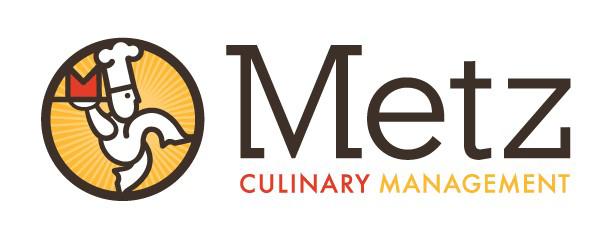





to


